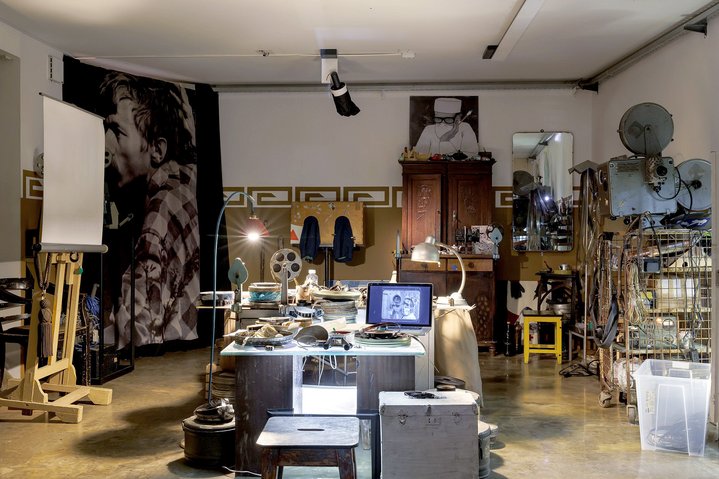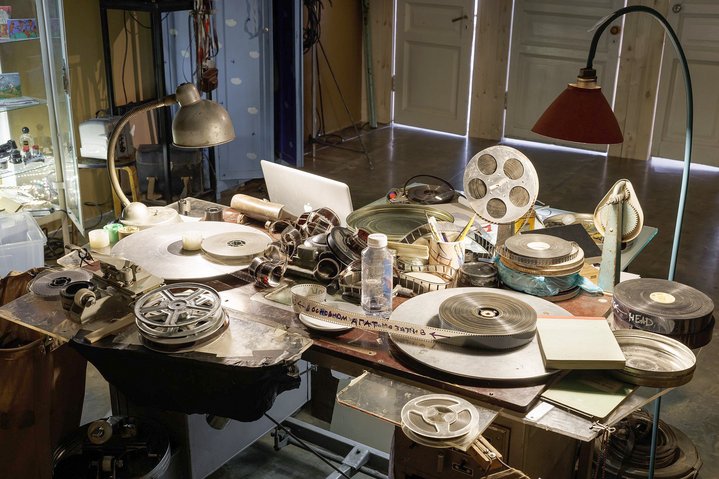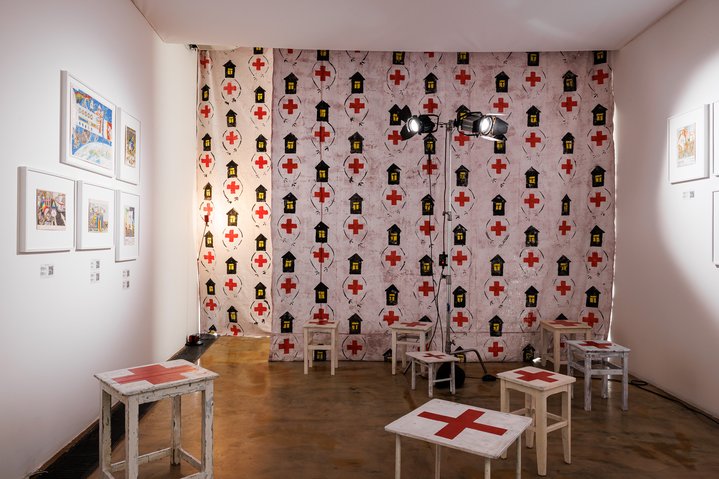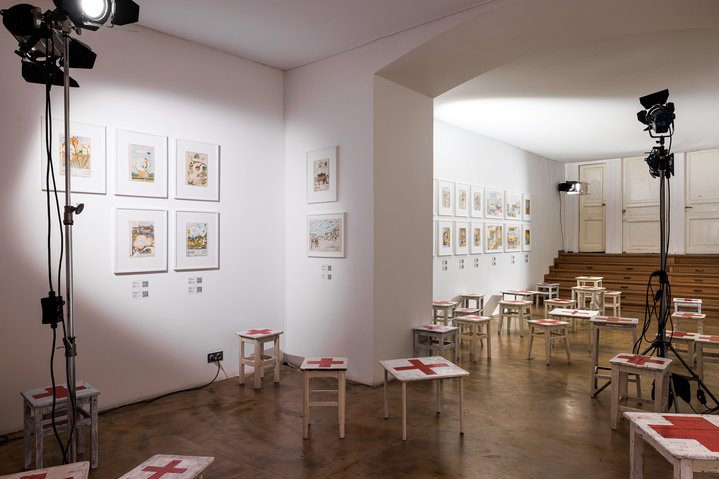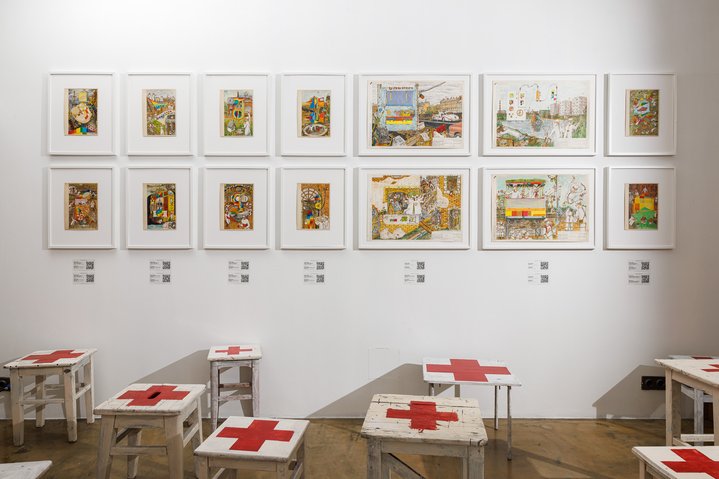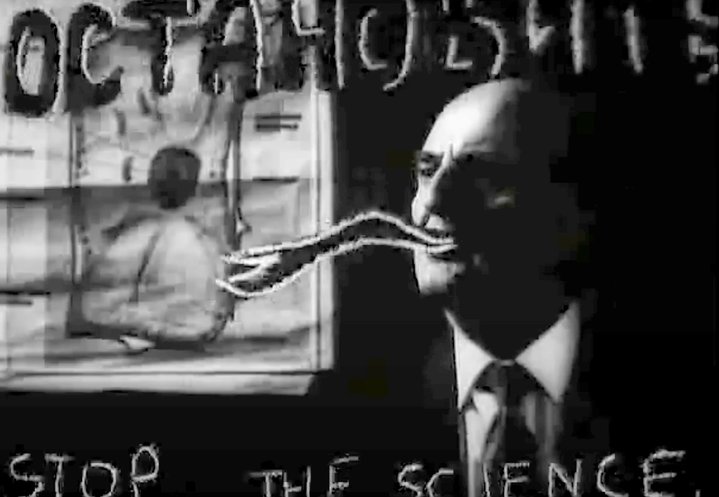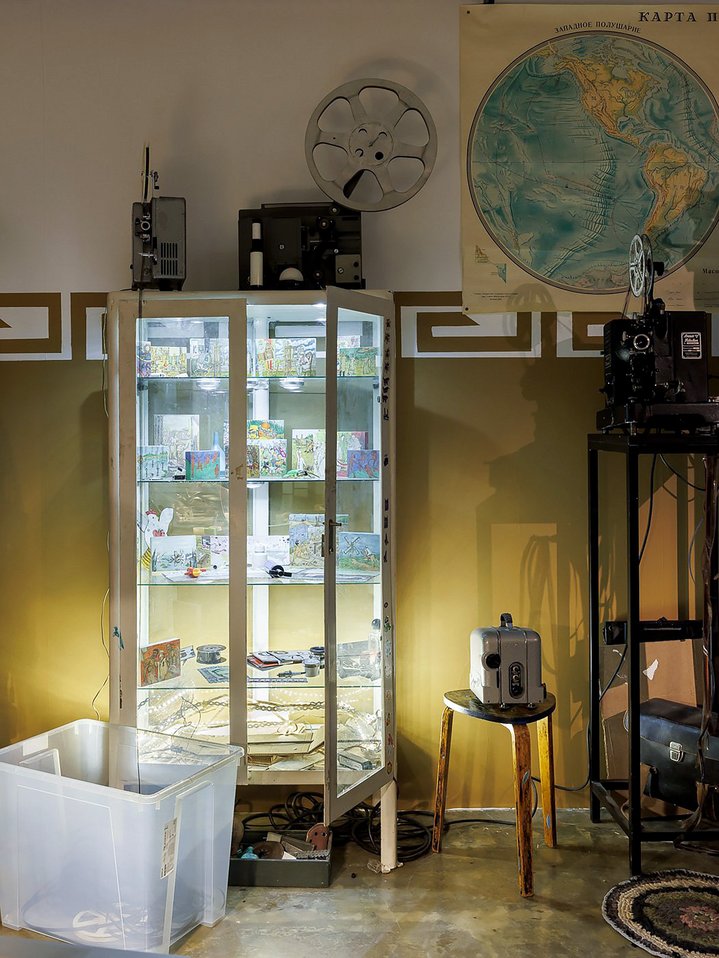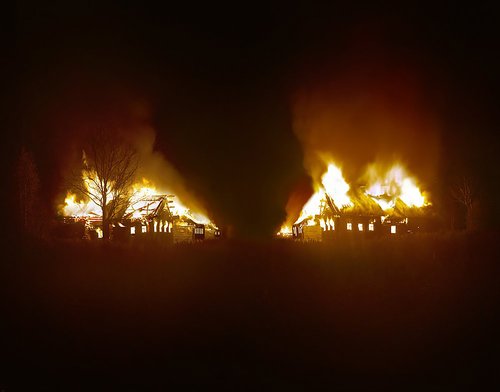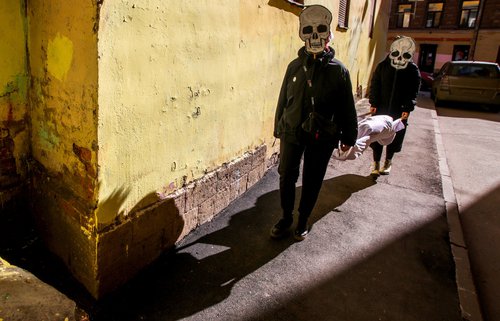Boris Kazakov. Doctors/Huts. Exhibition view. Saint Petersburg, 2023. Courtesy of Marina Gisich Gallery
Boris Kazakov and the Radical Art of Animation
Boris Kazakov's exhibition Doctors/Huts at Marina Gisich Gallery, curated by Katya Bochavar, brings together for the first time both the poetics of his art with its technical side, in what is an engaging, holistic retrospective of this St Petersburg artist.
Starting out in the 1990s without any formal art education, like many others of his generation in Soviet Russia, Kazakov wanted to find himself in art. He joined the ‘Engineers of Art’ a group of artists led by Inal Savchenkov (b. 1966), one of the many offshoots of Timur Novikov's (1958–2002) New Artists movement, that embodied a punk aesthetic with a bias towards Futurism and Surrealism. "It was a cool time with a special vibe which was not defined consciously by any of us but was just there. Guys would dress up in smart suits and shoes from the fifties and go out, it felt like you were driving around in a vintage car. We lived and worked in different squats, there were amazing spaces appearing all the time. Had there been mobile phones in those days, we would have spun the whole world as we wanted," reflects Kazakov, adding, "But back then I was not aware that we were taking part in something significant."
In 1992 the artists created a short film ‘The Country Greets Its Heroes’ in the special effects department of Lenfilm cinema studio. The film was shot using collage animation and was included in the programme of the 1993 Berlin Film Festival. In those years, experiments in the field of cinema, which began with the filming of happenings on amateur film cameras, became a phenomenon: the leader of Necrorealism Yevgeny Yufit (1961–2016) worked alongside Kazakov and his comrades, and in 1991 he released his feature-length debut at Lenfilm studio, ‘Daddy, Father Frost is Dead’.
Kazakov was inspired by the avant-garde animation traditions of Norman McLaren (1914–1987) which he adopted in his first works, his 1996 film ‘Fledglings of the Sea’ and three year later ‘Poles’ both using camera-less animation. Frame-by-frame drawing directly onto film turns archival black-and-white documentary footage into a surreal carnival of constantly transforming images. These films established his name in the field. ‘Fledglings of the Sea’ was awarded a prize at the 1998 Oberhausen Festival, ‘Poles’ was shortlisted at the 1999 Berlin Film Festival, and in 2000 editions of both films were acquired by the Amsterdam Film Museum.
Doctors and huts, to which the current exhibition owes its name, are two of Kazakov's favourite ‘characters’ and archetypes of the Russian collective unconscious. In his painted epic, the artist breathes new life into the ‘hut on chicken legs’ from Russian fairy tales and the infamous murderous doctors of Soviet political lore, who became heroes of necrorealist films and paintings. Since 2018, Kazakov's series of works on paper number into the several hundred, all created in a handmade and time-consuming technique. The artist draws the outlines on cardboard (and sometimes burns them onto a board) and successively paints using watercolours and pencils. All the images comprise carefully worked out details and require careful scrutiny, they are evocative of illustrations with explanatory captions in children's books and encyclopaedias. Kazakov is fascinated by technical drawings, and you can see this reflected in much of his work, especially the series ‘Secret Designs’.
The artist nurtures this imaginary world of doctors and huts conjuring up the smallest of details, each story combining aspects from reality and fiction. Often characters meet in familiar settings depicting St Petersburg’s architecture or act in scenes taken from textbook works of art which the artist has altered using his signature satirical intervention. If the doctors symbolise rational knowledge and urban civilisation, the huts symbolise organic life in the countryside. One can recall the theme of the common people in Russian paintings of the second half of the 19th century and Kazakov creates characters who could have come from this milieu: the doctors represent the intelligentsia and come face to face with the ‘people’ in the form of huts living out their own lives, there is a gulf of misunderstanding between the two. Yet, over many years of coexistence, the doctors and the huts form a symbiosis, each adopting the qualities of their rival with ease, it’s a mutual study. Kazakov's characters are as much a product of Russian postmodernism as the creatures in Victor Pelevin's ‘The Life of Insects’ or Vladimir Sorokin's ‘Blizzard’.
The house where Kazakov lives and works today, perhaps predictably, stands on the border between city and countryside. There are numerous film projectors, an editing table, and yaufs with films which have been transported here to his studio from his home in the St. Petersburg suburb of Kolomyagi. The artist still uses one of the film projectors, which he started to work on with his ‘Engineers of Art’ colleagues around 1991. Reflecting of the origins of cinema itself, while tucking film into the projector, Kazakov says, "If there is a serviceable airplane sitting around somewhere, sooner or later someone is going to fly on it” and adds with a laugh: "Only on a plane you can crash, and here, perhaps, there’s less danger."
The mechanical sound the film camera makes does evoke the propellers of an aeroplane. The artist collects and preserves a huge archive of films from Soviet newsreels of the 1950s to artists' shootings of the 1990s although so far only a small part has been digitised: "At one time or another I let go of all the films I had made, all my 13 films were dispersed first on video tapes, then as CDs, then as digital links. Everything goes somewhere and then comes around. A friend once told me a bar in Goa was showing my films, only with different music! I have put some of my film material on Instagram now, the rest is on hard drive, because it's mostly sketches. I have quite a lot of shoots on 16 and 35 millimetres, both my films and clips made by others, but not everything is worth showing to the public. When making a film, there can be five takes, but each part is interesting, it takes time to understand a subject”. Today Kazakov naturally combines analogue and digital in his art, installing a modern camera in place of a film projector lens and taking individual shots from the film, which are then edited on a computer and turned into frame-by-frame animation. A definition that fits Kazakov's art well is ‘New Old Media’.
Boris Kazakov. Doctors/Huts
St. Petersburg, Russia
6 September – 25 November, 2023






